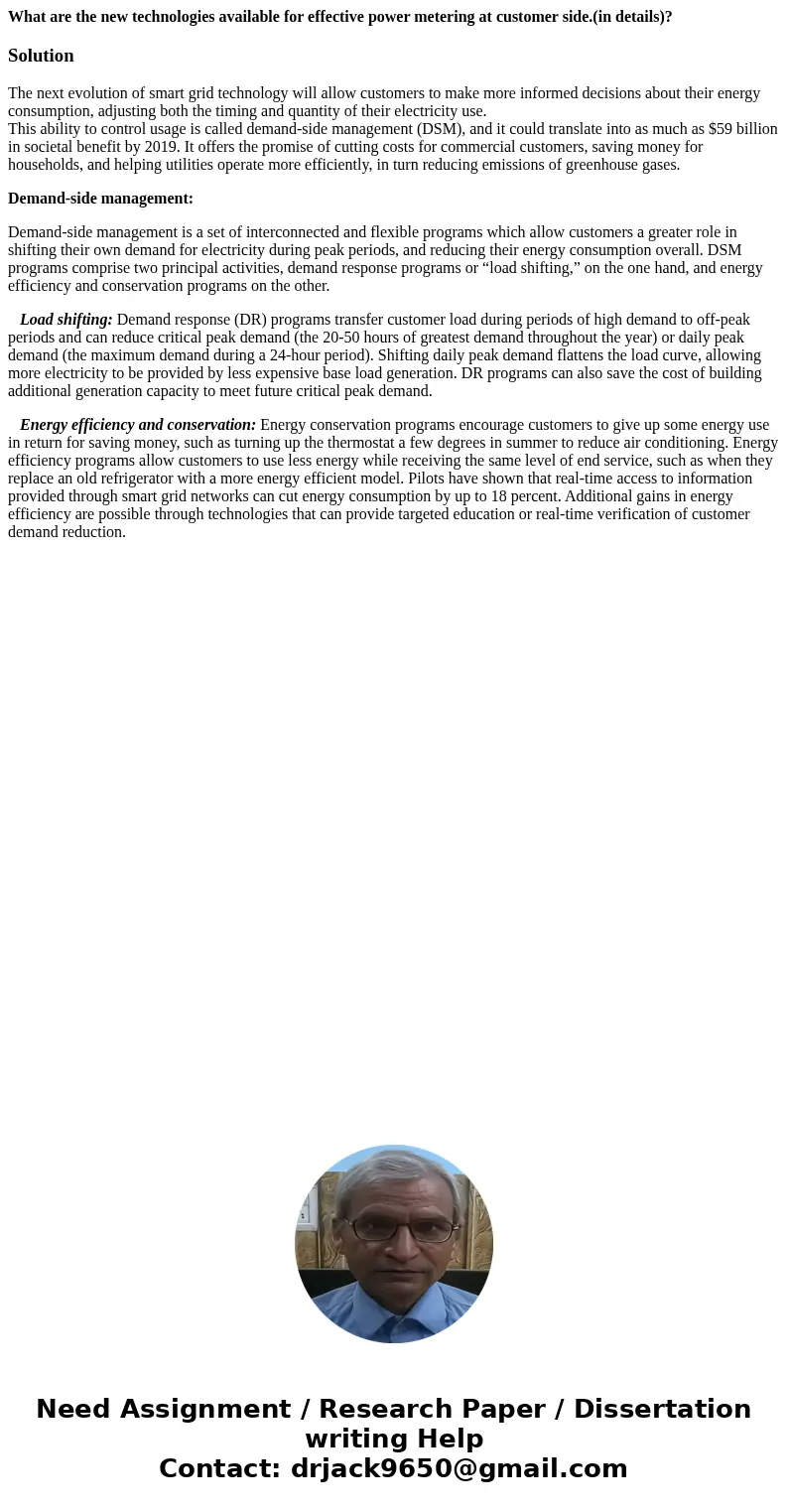What are the new technologies available for effective power
What are the new technologies available for effective power metering at customer side.(in details)?
Solution
The next evolution of smart grid technology will allow customers to make more informed decisions about their energy consumption, adjusting both the timing and quantity of their electricity use.
This ability to control usage is called demand-side management (DSM), and it could translate into as much as $59 billion in societal benefit by 2019. It offers the promise of cutting costs for commercial customers, saving money for households, and helping utilities operate more efficiently, in turn reducing emissions of greenhouse gases.
Demand-side management:
Demand-side management is a set of interconnected and flexible programs which allow customers a greater role in shifting their own demand for electricity during peak periods, and reducing their energy consumption overall. DSM programs comprise two principal activities, demand response programs or “load shifting,” on the one hand, and energy efficiency and conservation programs on the other.
Load shifting: Demand response (DR) programs transfer customer load during periods of high demand to off-peak periods and can reduce critical peak demand (the 20-50 hours of greatest demand throughout the year) or daily peak demand (the maximum demand during a 24-hour period). Shifting daily peak demand flattens the load curve, allowing more electricity to be provided by less expensive base load generation. DR programs can also save the cost of building additional generation capacity to meet future critical peak demand.
Energy efficiency and conservation: Energy conservation programs encourage customers to give up some energy use in return for saving money, such as turning up the thermostat a few degrees in summer to reduce air conditioning. Energy efficiency programs allow customers to use less energy while receiving the same level of end service, such as when they replace an old refrigerator with a more energy efficient model. Pilots have shown that real-time access to information provided through smart grid networks can cut energy consumption by up to 18 percent. Additional gains in energy efficiency are possible through technologies that can provide targeted education or real-time verification of customer demand reduction.

 Homework Sourse
Homework Sourse